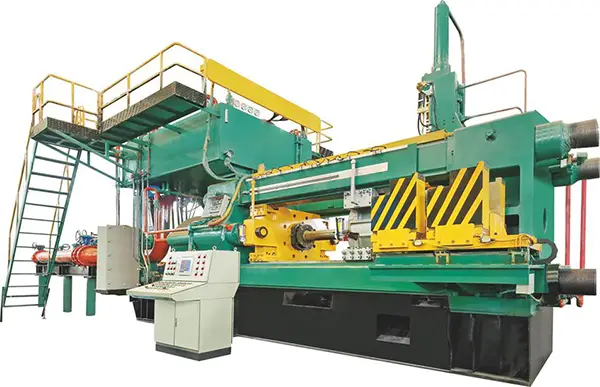Principles and Equipment Selection for Aluminum Extruders
Aluminum extrusion is a critical process in producing aluminum profiles, and selecting the right extruder plays a significant role in achieving high-quality results. The choice of extruder depends on factors such as the alloy type, profile complexity, and production volume. This article explores the principles of aluminum extrusion and provides guidance on selecting the appropriate equipment for your production line.
Principles of Aluminum Extruders
Aluminum extruders operate based on two main principles: single-acting and double-acting. Double-acting extruders are used for producing seamless aluminum pipes. In this method, the main cylinder pushes the aluminum rod, while a through-hole cylinder creates a hole in the rod’s center. The mold and the through-hole cylinder combine to form a tube-shaped cavity, allowing for the extrusion of seamless profiles.
Single-acting extruders, in contrast, are used to create profiles with seams. The main cylinder presses the aluminum rod against the mold, producing a profile with a visible seam, though it is detectable only with specialized instruments. The choice between a single-acting or double-acting extruder depends on the desired profile and whether seamless or seam profiles are required.
Types of Aluminum Extruders
Aluminum extruders come in different configurations, such as oil pressure, water pressure, vertical, horizontal, forward extrusion, and reverse extrusion. Each configuration is designed for specific applications. The selection of the right type depends on the alloy and the type of profile being produced.
For example, a forward single-acting horizontal extruder is ideal for extruding 6063-T5 industrial aluminum profiles, while a double-acting horizontal extruder works best for soft alloy pipes, as it produces seamless profiles. Choosing the correct configuration ensures better efficiency and profile quality.
Selecting the Right Extruder
When selecting an extruder, it's crucial to consider extrusion capacity. The required capacity depends on the production volume, profile complexity, and section size. It is essential to calculate parameters such as annual production time, hourly workload, and expected output to ensure the extruder can meet production demands efficiently.
Additionally, the type of alloy plays a role in determining the appropriate extruder. Harder alloys may require more powerful extruders, while softer alloys can be processed with smaller machines. Choosing the right equipment based on alloy properties ensures smooth operation and high-quality extrusion.
Lastly, selecting the right extruder grade—whether heavy, large, medium, or small—should be based on your production conditions and goals. A careful evaluation of your production requirements will help you select an extruder that balances capacity, efficiency, and cost-effectiveness.



